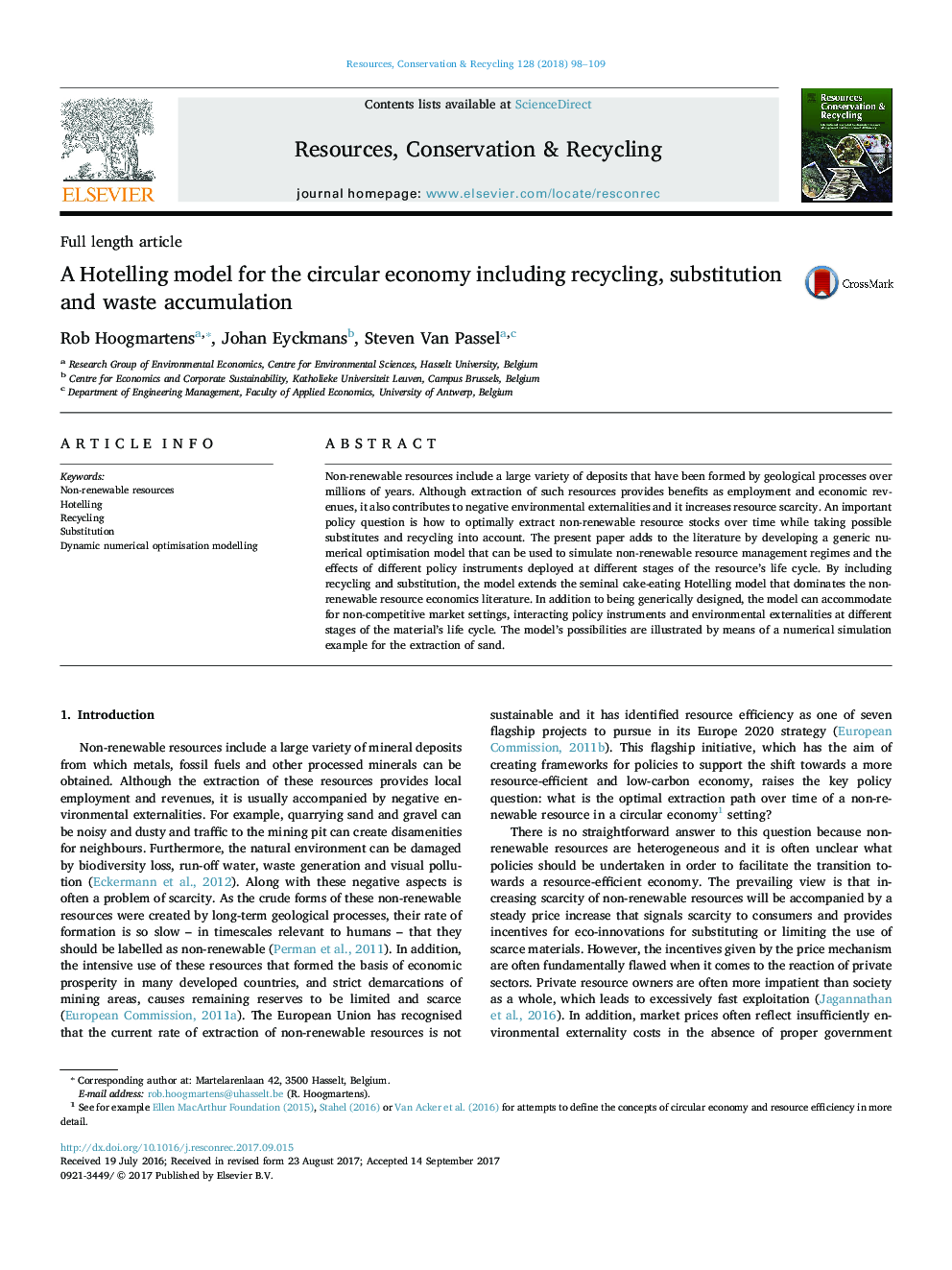| Article ID | Journal | Published Year | Pages | File Type |
|---|---|---|---|---|
| 5118714 | Resources, Conservation and Recycling | 2018 | 12 Pages |
Abstract
Non-renewable resources include a large variety of deposits that have been formed by geological processes over millions of years. Although extraction of such resources provides benefits as employment and economic revenues, it also contributes to negative environmental externalities and it increases resource scarcity. An important policy question is how to optimally extract non-renewable resource stocks over time while taking possible substitutes and recycling into account. The present paper adds to the literature by developing a generic numerical optimisation model that can be used to simulate non-renewable resource management regimes and the effects of different policy instruments deployed at different stages of the resource's life cycle. By including recycling and substitution, the model extends the seminal cake-eating Hotelling model that dominates the non-renewable resource economics literature. In addition to being generically designed, the model can accommodate for non-competitive market settings, interacting policy instruments and environmental externalities at different stages of the material's life cycle. The model's possibilities are illustrated by means of a numerical simulation example for the extraction of sand.
Related Topics
Physical Sciences and Engineering
Energy
Renewable Energy, Sustainability and the Environment
Authors
Rob Hoogmartens, Johan Eyckmans, Steven Van Passel,
